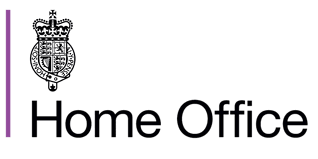HISTORIC PRESS RELEASE : Strategic Rail Plan – Briefing for the Wales region [January 2002]
The press release issued by the Strategic Rail Authority on 14 January 2002.
Delivering improvements for Wales’ railway
A Plan for the future of the railways is published today by the Strategic Rail Authority (SRA), setting out a series of measures to improve Britain’s railway and ensure the Government’s growth targets are met. The Plan outlines how improvements for passenger and freight customers will be delivered in the short and medium term, contributing to the aspirations of the Welsh Assembly Government’ Transport Framework, as well as setting out long term ideas for the next decade.
The Plan has the full backing of the Government, which has increased public funding for the railway by £4.5 billion compared with the allocation in the Ten Year Transport Plan. It is the first time in almost 50 years that a plan has been created designed to lead to expansion of the railway. The SRA itself will be restructured to deliver the Plan and new high level appointments were advertised yesterday, including a Chief Operating Officer to ensure a focus on immediate delivery and performance.
Launching the Plan, the SRA’s new Chairman, Richard Bowker, said
“This Strategic Plan marks the line in the sand, it is the point at which we say enough is enough and begin the journey to deliver a railway fit for the 21st Century. But, we recognise that medium and long term aims are not enough. The railway has many current problems and we will take all the steps we can to bring about the earliest improvements for rail users.
“The input to the Plan from Sue Essex and her team has been most helpful. The Strategic Plan outlines the mechanism for the delivery of improved commuter services in the South Wales, faster and more frequent links with London and England’s major cities, more and better trains for the rural communities and the expansion of rail freight. As a key step, the process of letting the Wales and Borders franchise will now be moving apace.
“£400 million has been allocated to a special GB wide Rail Performance fund set up to co-invest with rail companies in short term schemes to improve reliability for passengers. A National Rail Academy is being developed to boost the training of staff in core railway skills. A £430m GB wide fund for local passenger improvements is included in the Strategic Plan, as is funding for freight facilities designed to move freight from road to rail”.
Richard Bowker said.
“This Plan offers for the first time stability, clarity and predictability for future projects and their timescales, enabling all participants in the industry to plan and resource effectively. It is practical and deliverable. It takes the policy objectives established in the Government’s Ten Year Transport Plan and sets out a quantified, prioritised programme to deliver those objectives. It demonstrates a commitment to safety, and a determination to attract and keep more passengers and freight customers.
“We must invest in the people who keep Britain’s railways moving. I want to see fewer accountants, fewer lawyers and fewer consultants, but more engineers, more operators, more project managers and especially more young graduates and school leavers joining an industry with a future”.
The Plan sets out the SRA’s vision for Britain’s railway where:
- sufficient trains run with sufficient frequency to meet growing passenger demand
- performance is better and stable, so that passengers and freight users can plan with confidence
- staff are trained, motivated, attentive and helpful
- the whole journey experience is vastly improved so that, from departure door to destination door, passengers are treated like the valuable customers are
- the stations are safe and welcoming with adequate parking and integration with other modes
- the trains reliable and clean, the journey predictable and relaxing
- there is overall a safe, reliable and value for money product throughout the UK
Richard Bowker concluded:
“The Plan is based on a railway that is in the private sector with public accountability and control exercised through the Strategic Rail Authority. The railway industry must urgently address the problems which face it, including the strikes which have caused such misery since the New Year. And, with the industry, the SRA will find effective solutions. Nothing can be allowed to get in the way of regeneration of our railway. The prize for success will be a system that meets our needs better and better each year. We will get there”.
The highlights of the Strategic Plan are summarised in the attached Annexe.
Annexe
Highlights of the Strategic Plan for Wales
Objectives
The objective of the Strategic Plan is to deliver the Government’s objectives set for the SRA. The primary objectives are to deliver by 2010:
- 50% increase in passenger kilometres
- reduction in overcrowding which breaches the SRA’s standards.
- 80% increase in freight tonne-kilometres.
The plan also meets where possible SRA’s other priorities set by Government, including better integration with other transport modes, expansion of capacity, promotion of the use of the railway network and encouragement of its use.
The priorities have been developed taking into account the Welsh Assembly Government’s Transport Framework, and dialogue with the Rail Passengers’ Committee for Wales and local authorities.
The SRA made representations to the consultation draft of the Wales Spatial Plan issued in September 2001.
Priorities
The plan sets clear priorities based on the need for mandatory safety improvements, emerging information about European Union requirements on interoperability and the cost of improving accessibility in line with the Disability Discrimination Act. It also takes account of the constraints of the specialist rail engineering resources available, and the need for schemes to represent value for money for taxpayers. In particular, the schemes are based on the need to stabilise the industry and improve performance, and on meeting the Government objectives set out in the Ten Year Transport Plan and those of the National Assembly of Wales, set out in their Transport Framework document. These priorities are reflected in the investment programme and the allocation of SRA financial support. The highlights for the short, medium and long terms are set out below.
Short Term (to 2005)
- The principal development for the short term will be letting of the Wales & Borders franchise.
- RPP-funded additional rolling stock on Taff Corridor to alleviate overcrowding, building on recent re-signalling funded by SWIFT. (implemented January 2002).
- 34 four-car CrossCountry Voyager trains to replace all loco-hauled services by May 2002. Progressive introduction of new trains, delivering extra services, including new services between Cardiff, Newport, the Midlands, the North of England and Scotland
- Testing of first of 44 tilting five-car Super Voyager trains, which will deliver faster journey times and more through services between North Wales and London.
- Wessex Class 158 trains (for Cardiff – Portsmouth service) – new air conditioned units; class 158 and 150 trains – sanders to improve performance and safety, particularly during leaf fall season.
- Central Trains phase two class 170 modification programme begun, to improve reliability of the fleet, and new air conditioning units on class 158 vehicles (170s and 158s operate on Cardiff – Nottingham service).
- Selective increased frequencies on the Cardiff Valleys networks.
- Strengthening of morning services Barry Island to Aberdare.
- Proposed reintroduction of passenger services to Ebbw Vale, a joint project being examined with the Welsh Assembly Government.
- Infrastructure improvements on Chester to Shrewsbury line to provide reduced journey times.
- Infrastructure improvements at Barry, Bangor and Chester to improve operational efficiency.
- Increasing capacity on the Swansea West Loop to improve operational efficiency and increase capacity.
- The SRA and the Welsh Assembly Government are providing a total of £14.5m for the reopening of the Vale of Glamorgan line to passenger traffic in 2003, providing stations at Rhoose (to serve Cardiff International Airport) and Llantwit Major and higher line speed for freight services. This project is funded through the Rail Passenger Partnership scheme.
- SRA is looking into possibility for new rolling stock for the Great Western route before 2006.
- RPP-funded station improvements at Haverfordwest
- £30m investment by Virgin West Coast in improving reliability, quality of passenger experience and maintenance provision.
- 125 mph operation (present top speed is 110 mph) for VWC services by May 2003, giving reduced journey times to and from mid and north Wales.
- Virgin West Coast infrastructure upgrade and renewal works to deliver increased capacity, high fast and slow line speeds, improved reliability and performance.
- A number of FGW stations in Wales will transfer to the Wales and Borders franchise this year.
Medium Term (2005-2010)
The medium term strategy is to deliver the growth targets set in the Government’s Ten Year Plan and to provide more capacity to relieve passenger overcrowding. Highlights of the projects required are:
- Line speed improvements on the Aberystwyth to Shrewsbury line.
- Increased passenger and freight capacity on the Newport to Crewe line.
- Improved gauge clearance in the Great Western main line to Cardiff for freight trains.
- Much of the signalling and track on the Great Western Main Line must be renewed over the next 10 years. Where signalling renewal takes place, this may provide an opportunity to enhance capacity and operational resilience at key locations, and also to replace the existing Automatic Train Protection system with the new ERTMS train control system on the high speed lines used by FGW. Considerable development work is needed on this proposal and will be taken forward in the short term.
- Key issues for the future Great Western franchise in the period after 2006, to which any new franchisee would have to pay attention, will include:
– Additional incentives for improved operational performance and customer satisfaction
– Investment in new trains to replace the FGW HST fleet
– Additional train services, with some improved journey times
– Investment in new and existing stations, car parks, depot and customer service.
Long Term (Beyond 2010)
Beyond 2010, the role of the railways will become even more important, and the key network capacity issues will have to be addressed. In particular, this involves:
- Great Western Main Line. Development of plans, linked with track and signalling renewal for the routes from London Paddington to South Wales and the West of England.
- West Midlands/Manchester Capacity. New infrastructure in the Birmingham and Manchester conurbations will deliver more capacity with benefits for services from North and Mid Wales.
Accessibility for all
Implementation of the plan will bring significant benefits for passengers with disabilities. The highlights of the programme of improvements are:
- All new vehicles will be fully accessible, complying with the Rail Vehicle Accessibility Regulations which are administered by DTLR.
- Additional funding to make large and medium stations accessible by 2004
- Work carried out under the small scale station improvements programme will be compliant with the SRA code of practice on access for disabled people;
- Disability Awareness training will be encouraged, and this is being reflected in new Code of Practice for train operators.


